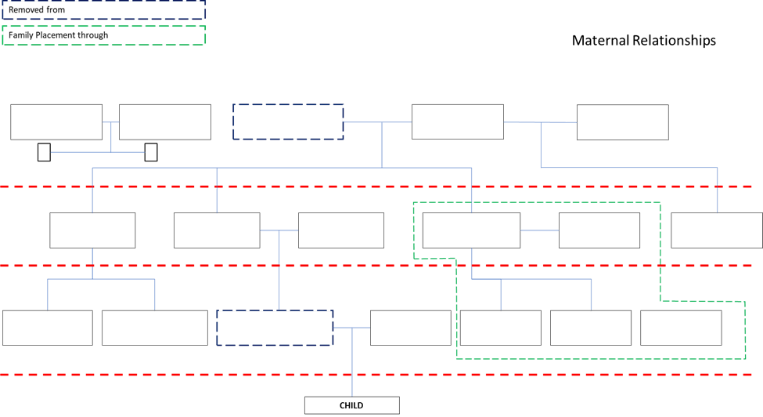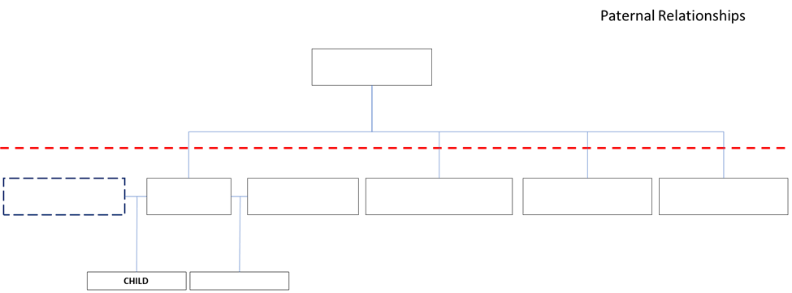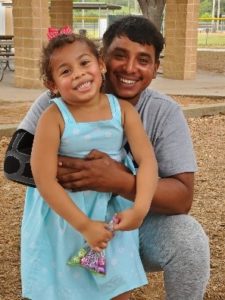How CFE Brought a Father and Daughter Together
By a CASA Advocate in Montgomery County, Texas
Building Support Systems
CFE (Collaborative Family Engagement) works.
A case that recently closed began with the emergency removal of a young girl from the biological parent due to neglect. Fortunately, the child was placed with a relative close by. The father was unknown at the time, and the alleged name provided on the affidavit could not be located.
The CASA Advocate began working with the family and CPS and started building a family tree. CASA was confident that the child was placed in a solid placement with a maternal family relative who was willing to adopt, but still wanted to ensure that the child would also have a strong support network.
The Guardian Ad Litem worked to create a detailed family tree simply by asking questions of anyone associated with the family. It took time, but gave a solid foundation from which to start working on engaging family members to help support the child.


Finding Family
The mother gave the Advocate a name of a “maybe daddy” and an old phone number. The Advocate texted the possible father, “Hi, my name is XXX, and I am a Child Advocate. Do you know (mom’s first name) and is it possible you had a child with her?”
Talk about an awkward text. However, he responded almost immediately, “Yes, I could be the father.” We spoke the next day.
During the duration of the case, it was a long process to establish his paternity so we could proceed to introduce him to his child and unite them. But until paternity was established, there was almost nothing CASA could tell him since he was not a party to the case. It was a months-long journey to get the order for DNA testing.
A Little Girl Meets Her Dad
Finally, during the seventh month of the case, the DNA test proved his paternity. Then, we started the delicate task of introducing the biological father to his daughter.
CASA, CPS, and the AAL (the attorney for the child) worked together to come up with what we thought was the best timing and the best approach to bring them together. None of us had experience with this particular situation, and we wanted to avoid any potential misstep that might further traumatize the child.
 The plan we agreed upon was for the Advocate and CPS caseworker to go visit the child together (the Advocate brought a bike to the visit – thanks CASA Bike Guys!) The CPS caseworker did a marvelous job telling the child about her father and asking if she wanted to meet him. The young girl was beyond delighted!
The plan we agreed upon was for the Advocate and CPS caseworker to go visit the child together (the Advocate brought a bike to the visit – thanks CASA Bike Guys!) The CPS caseworker did a marvelous job telling the child about her father and asking if she wanted to meet him. The young girl was beyond delighted!
We arranged a first meeting in a park a week later, and the meeting went better than any of us hoped! Dad brought his wife and their son. There was nothing but smiles and happiness. There were further weekly meetings in different parks, and dad brought extended family to meet their young relative. The girl quickly realized that she had a big family who loved her. A few weeks later, the daughter went to live with her father, his wife, and her half-brother.
Trust Based Relational Intervention (TBRI) Helps the Family Come Together
Not surprisingly, there were ups and downs when the girl first went to live with her dad – she tested boundaries and needed to know if this was her real home or just another way station.
The father and the Advocate had several long conversations on Saturdays and Sundays. Dad volunteered to participate in Trust Based Relational Intervention (TBRI) coaching once a week after working all day outside. He met with the CASA TBRI Practitioner weekly. The TBRI coaching proved invaluable in helping dad and his wife understand the girl’s behaviors due to her trauma history, as well as how to handle and redirect the behaviors with TBRI tools so they could come together as a family of four.
In the end, the father hung in and made this a success story. He missed work in order to attend Zoom court. He spent months with very little information and fighting to get DNA testing ordered. And, most importantly, he chose to be a dad and bring his daughter home.
CFE Tips from the CASA Advocate
- First, ask about family every chance you get. Call people, text them, message them. It is surprising how often family will talk to an Advocate, even if there is little (if any) information the Advocate can share with them.
- We thought we had a solid placement for the child if she could not be returned to the mother, and if we were unable to find the father. For complex reasons, the placement did not work out, so having family information for both her parents was a great safety net.
- Calling or texting people out of the blue can be nerve-racking for the Advocate, but imagine the people on the other end receiving the call. The Advocate shared a small, but informative speech about what a Guardian Ad Litem is and why they are calling. Invariably, the family member asked lots of questions. For Advocates, be prepared and be comfortable saying, “I’m sorry, for confidentiality reasons, I can’t tell you.” Every single person the Advocate contacted understood this and cooperated.
CFE TOOLS AND GUIDE
There is now a Spanish CFE video available for Spanish-speaking parents and families. This Spanish CFE video can be found here.
Check out the newly updated CFE Pocket guide from Texas CASA – Download the CFE Pocket Guide here..
CONTACT US!
If you have a success story or questions regarding Collaborative Family Engagement, please email Family Engagement Manager, Destin Hudek at Destin@CASAspeaks4kids.com.
